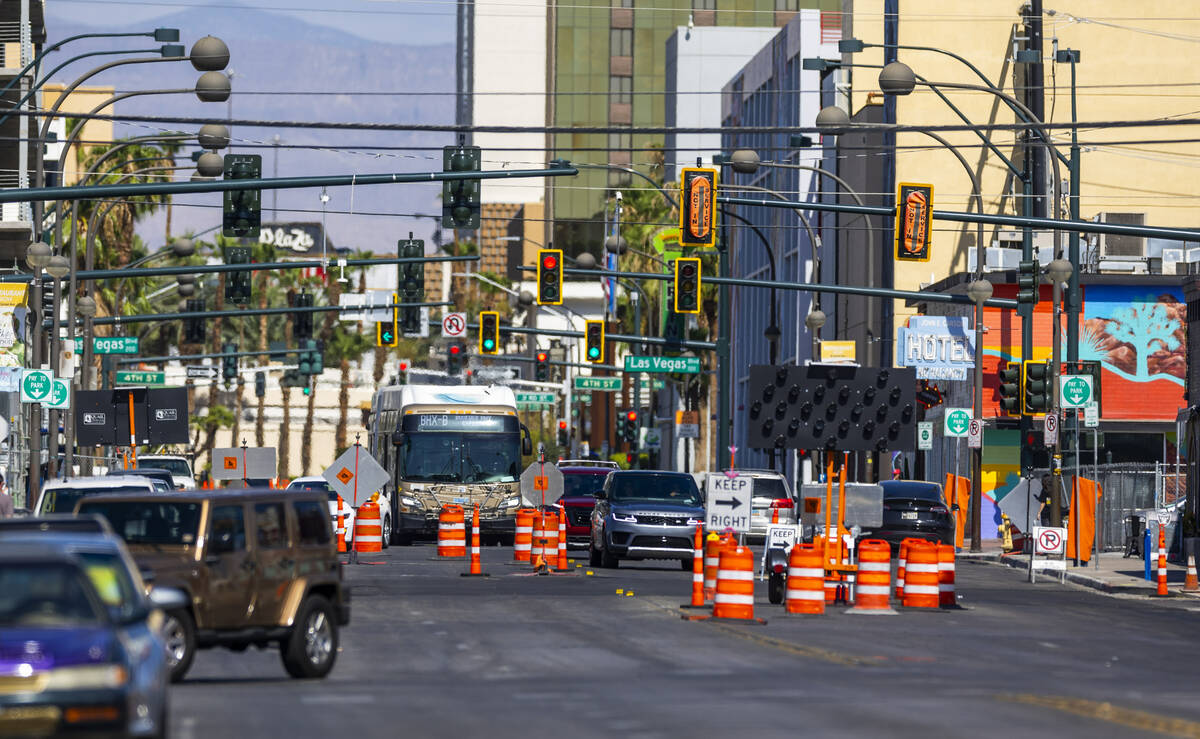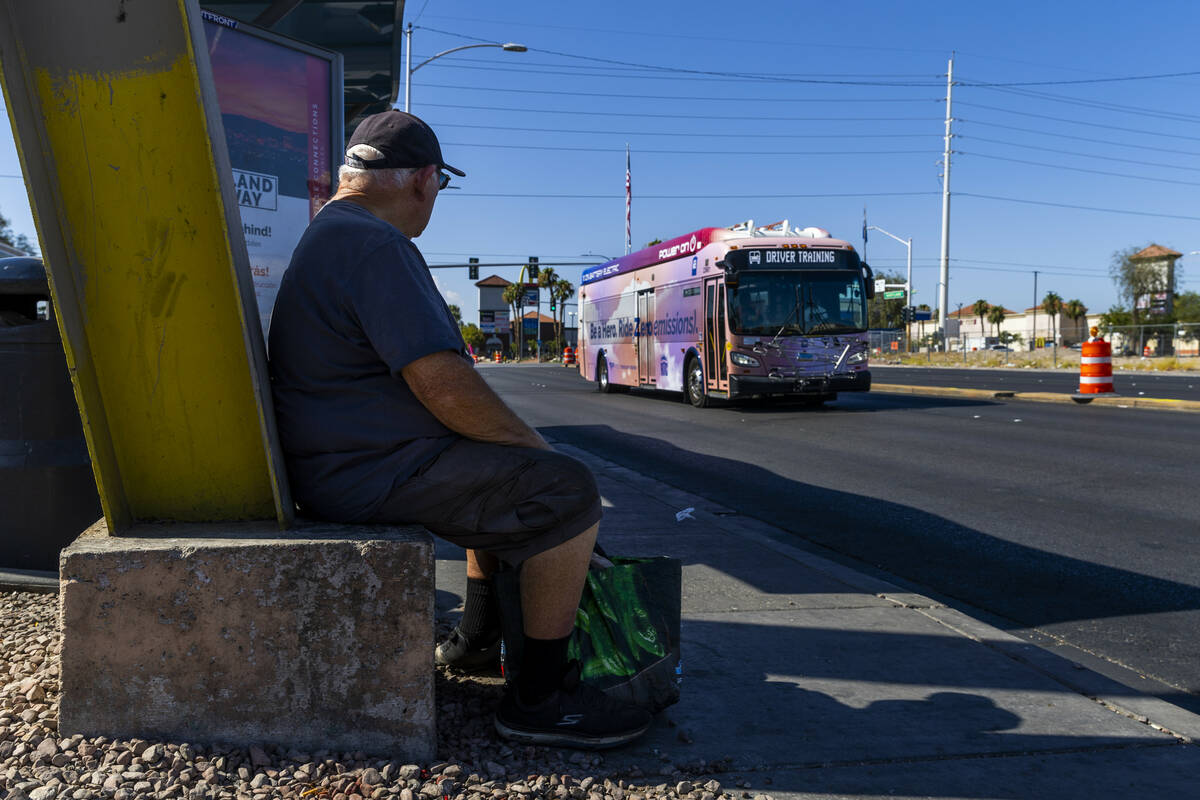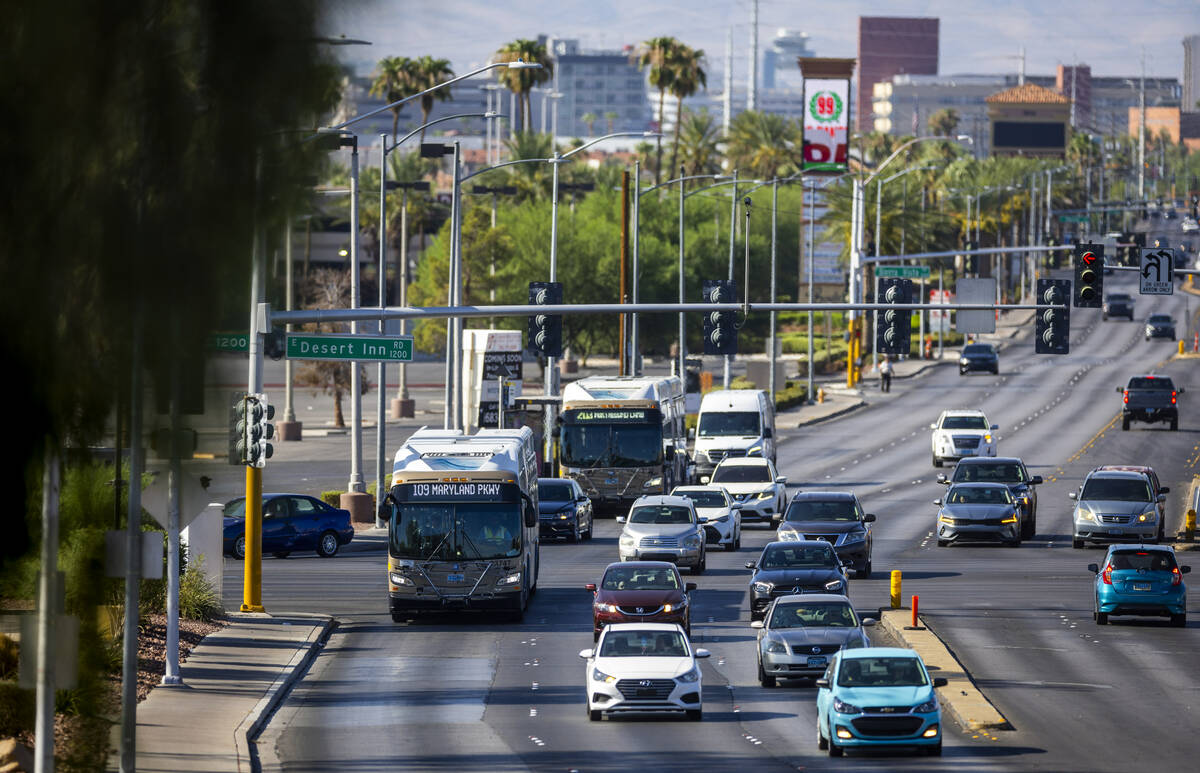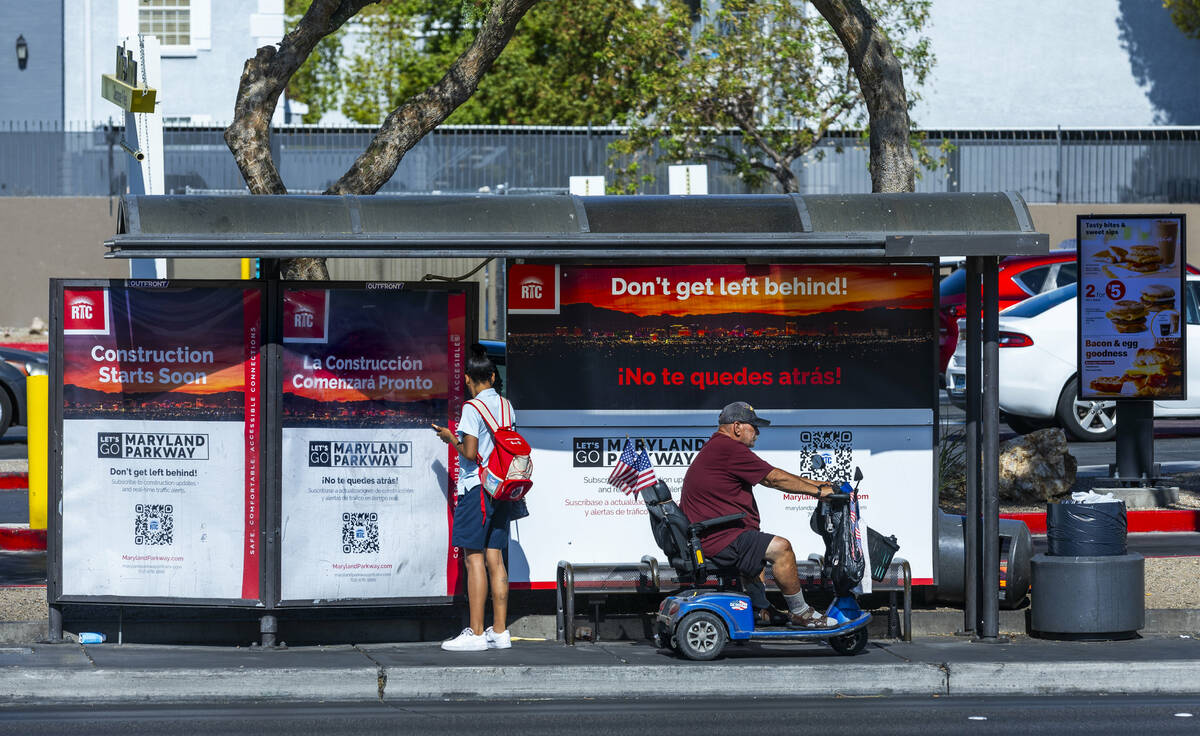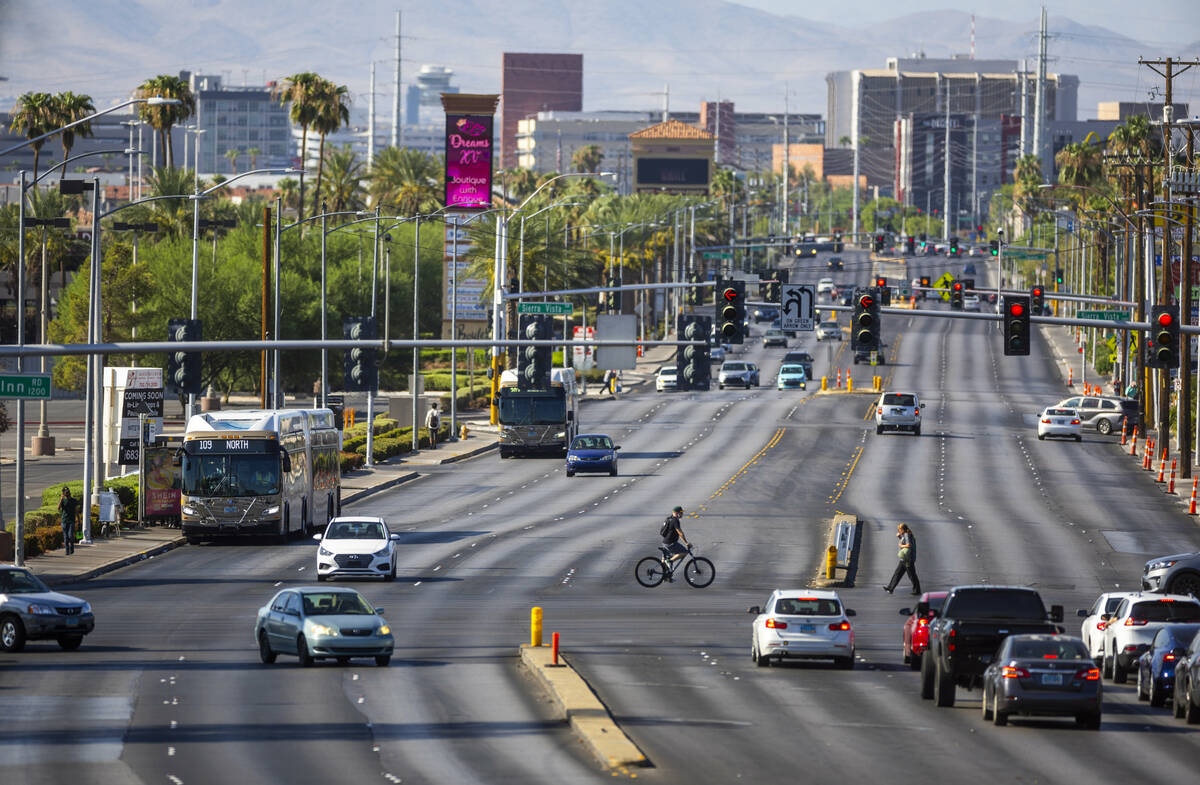Construction begins on Maryland Parkway bus rapid transit project
After years of being talked about, work on the Maryland Parkway bus rapid transit line is now underway.
Crews were set to began work Monday on the long-discussed $378 million project, aimed at increasing the bus service along the busy corridor. The full 12.5-mile corridor includes portions of Maryland Parkway from Harry Reid International Airport— including UNLV — to downtown Las Vegas, the Bonneville Transit Center, the Las Vegas Medical District and the Kirk Kerlorian School of Medicine at UNLV.
Initial road impacts
Work on the BRT project will begin Monday on a trio of areas near downtown Las Vegas.
One stretch of work will be on Maryland Parkway between Sahara Avenue and Oakey Boulevard. Work will occur daily between 7 a.m. and 3 p.m., with two lanes open in each direction day and night.
The second area of construction will begin on Bonneville Avenue at Martin Luther King Boulevard. Work on Bonneville takes place between 9 p.m. and 5 a.m., with two lanes in each direction open in the day and one lane in each direction at night.
Wellness Way at Shadow Lane marks the third area of work. Work there will occur between 7 a.m. and 3 p.m., with one lane in each direction open day and night.
Project details
The project includes more than 7 miles of dedicated bus lanes running on Maryland Parkway, where buses will receive traffic signal priority. The BRT service will cut a rider’s travel time down by about 20 percent, compared with the traditional bus route, according to the RTC.
Bus stops will be spaced a third of a mile a part on the system, with 15 60-foot-long buses with 90-passenger capacity per vehicle. Plans also call for enhanced bus shelters, shared bus-bike lanes, wider sidewalks and improved lighting.
The bus rapid transit system was chosen in 2019 by the RTC board of commissioners over the more expensive $1 billion-plus light rail option and the cheaper $29 million upgrading of Route 109.
Aside from the enhanced bus system, the project also includes moving above-ground power lines along Maryland Parkway underground, to make the area more aesthetically pleasing. The hope is that, along with the upgraded bus service, development will spur along the route as a result of the project.
The Maryland Parkway corridor serves 90,000 residents, provides 80,000 jobs, and has 9,000 daily transit riders. Early estimates by the RTC project bus ridership along the corridor will increase to 13,300 daily riders in the opening year of the project.
Work on the project is expected to wrap up sometime in 2026.
Contact Mick Akers at makers@reviewjournal.com or 702-387-2920. Follow @mickakers on X. Send questions and comments to roadwarrior@reviewjournal.com.



